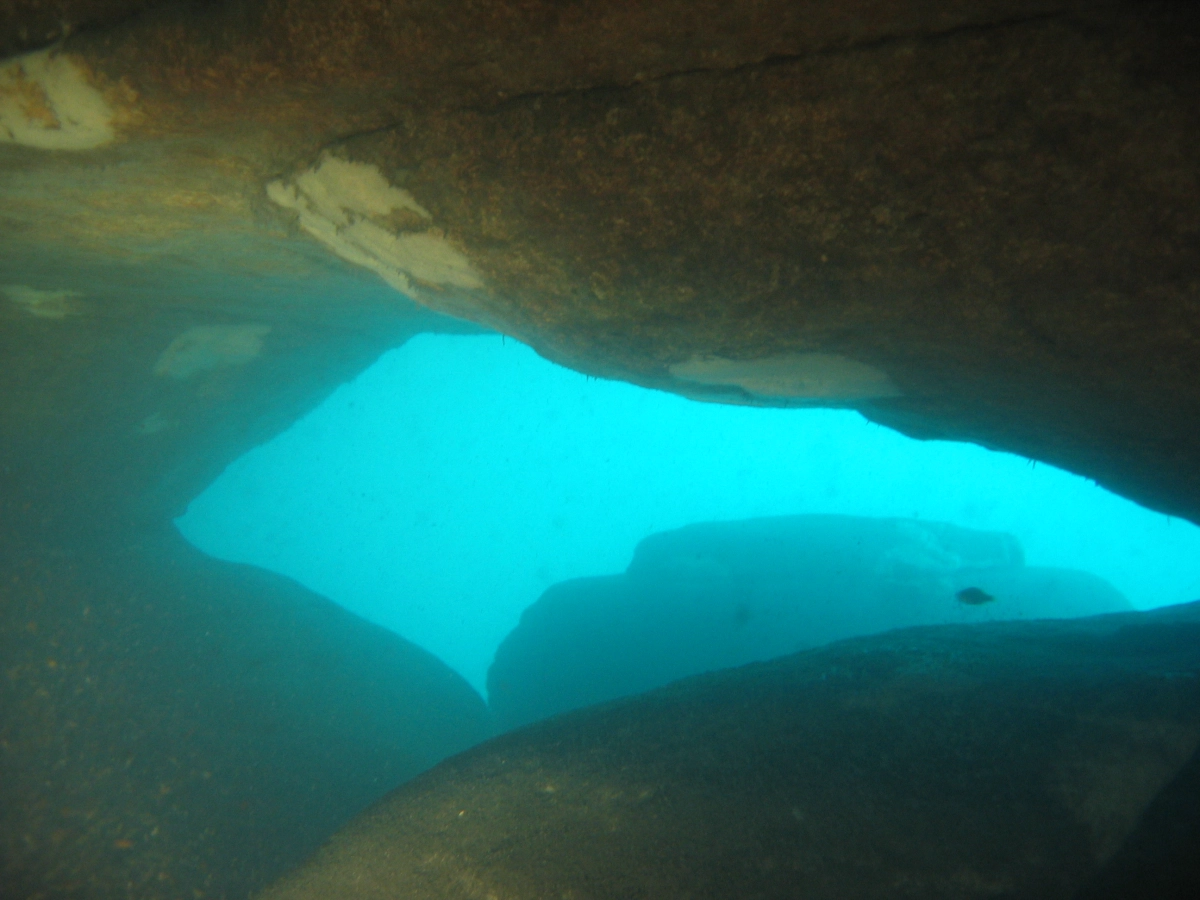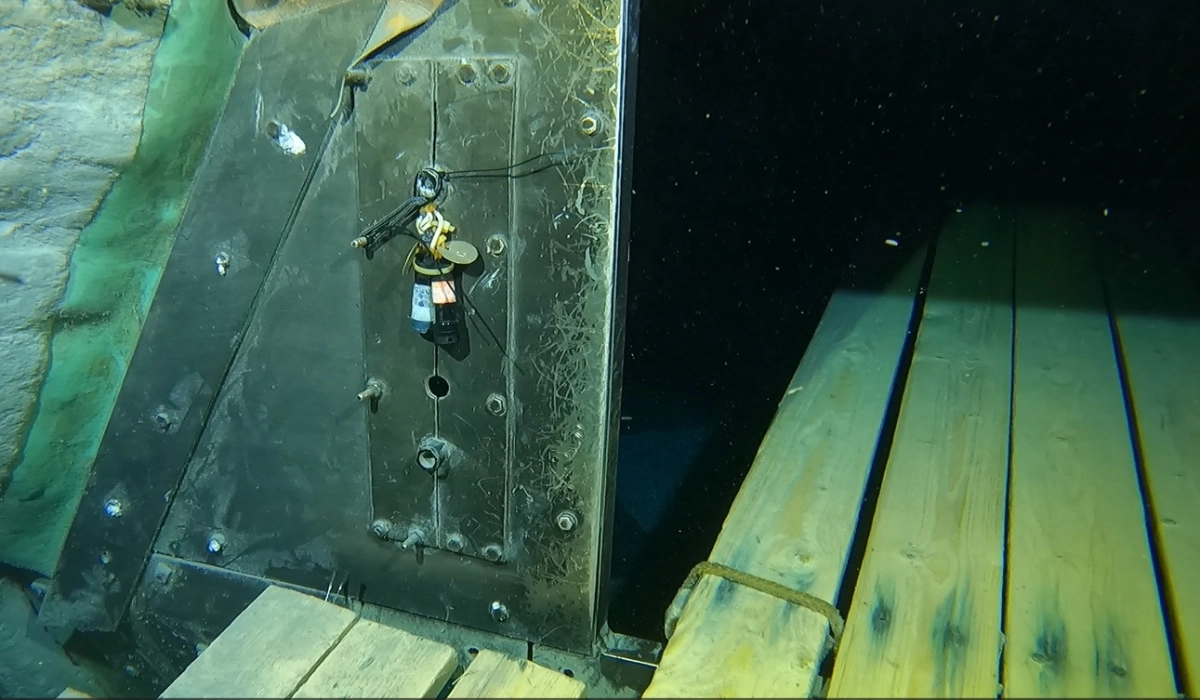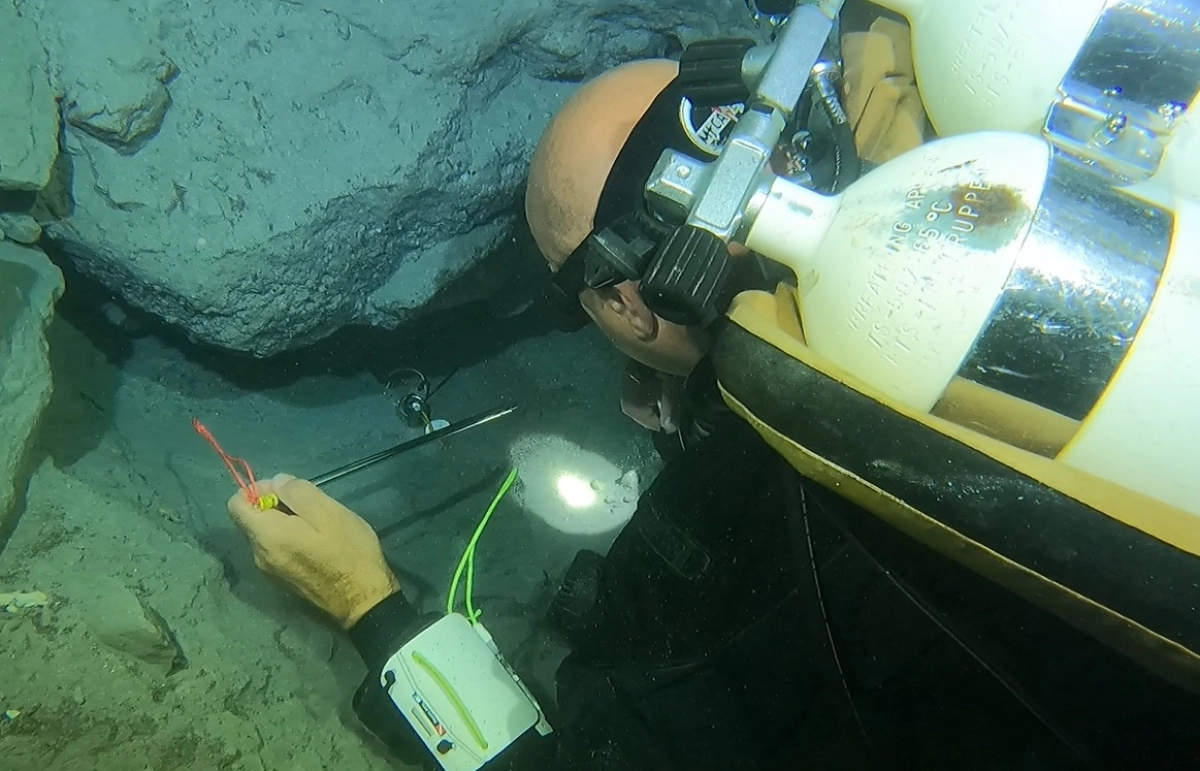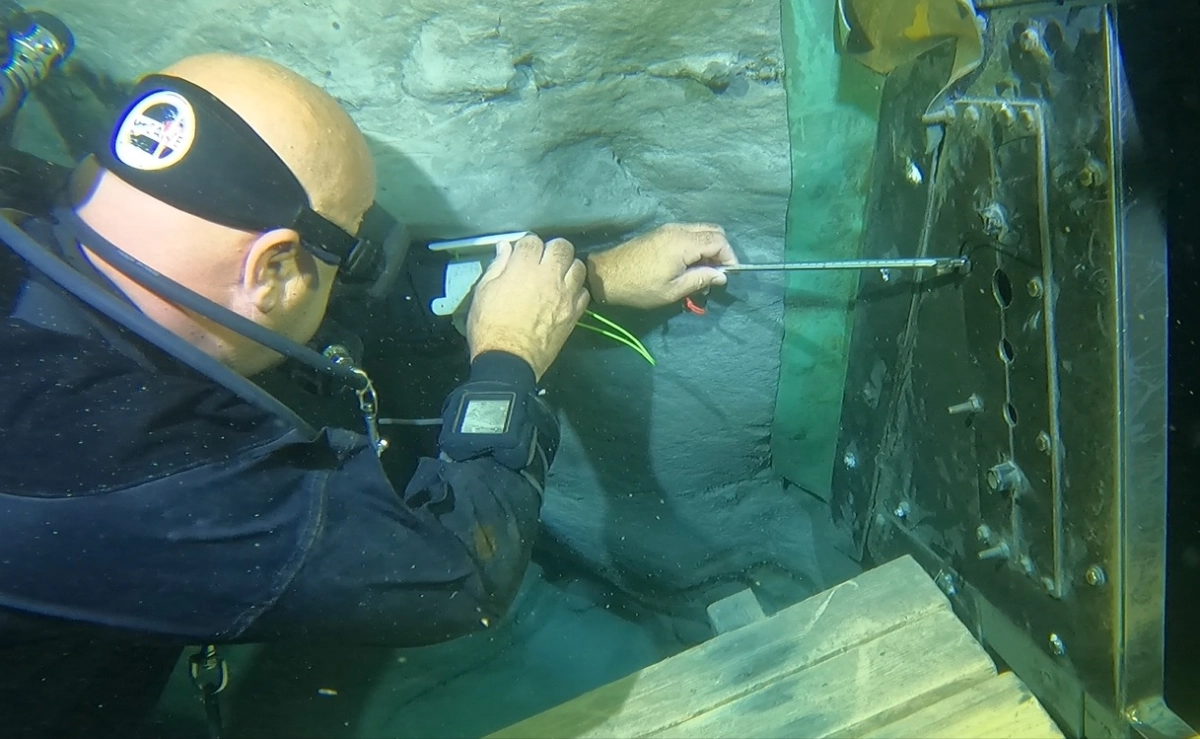The water that completely fills the cave is composed of two components: a smaller, cooler portion arrives from the east, from the direction of the Keszthely Mountains, while the warmer and more abundant water flows in from the west, from the Zala Basin. The warm water enters the cave through several smaller and larger fractures and subsidiary spring channels.
The temperature of Lake Hévíz is monitored by the St. Andrew Rheumatology Hospital and Medicinal Spa in Hévíz using data loggers, and manual temperature measurements are also conducted by research divers at the spring sources within the cave. Of the cave’s nine springs, three are equipped with sensors to measure their temperatures, along with the temperature of the mixed water where the outflowing waters converge. The measurements are continuous; research divers retrieve the probes every two months for evaluation. These data provide accurate information on water temperature.
Regular dives are currently ongoing to monitor changes and collect data. Water samples are regularly taken from the spring fissures as well as from the mixed water. In 2024, the average temperature of the mixed water in the cave was 37.4 °C, compared to 37.3 °C in 2023 and 37.5 °C in 2022. These measurements indicate that the temperature of the mixed water in the cave has not significantly changed over recent years.
The surface water temperature of Lake Hévíz—like that of any standing body of water—is influenced by external meteorological factors such as air temperature, precipitation, wind, and changes in atmospheric pressure. The temperature of the mixed water emerging at the surface is particularly sensitive to these variations, as the near-surface water layers are exposed to environmental influences.
For example, if a sudden warm front moves into the area, the temperature of the surface water can rise quickly, whereas it may drop during cold fronts. In addition, water movement plays an important role in the distribution of temperature, affecting which areas warm up faster and which remain cooler.
Surface water temperature measurements at various points of the lake also vary seasonally; on a winter day, the temperature difference can be as much as 1.1 °C, while on a hot summer day, it may be only 0.4 °C.
Continuous monitoring of the water temperature is essential for maintaining the lake’s ecological balance. Regular measurements ensure the quality and temperature of the water for those seeking healing.
(Source: Nagy J. B., Hajnal G., Szieberth D., Rehák A. M., Reska Z. J., Torma P. (2025) - A Hévízi-tó monitoring hálózata, annak fejlesztése, kiegészítése kampányjellegű mérésekkel (Hidrológiai Közlöny))














